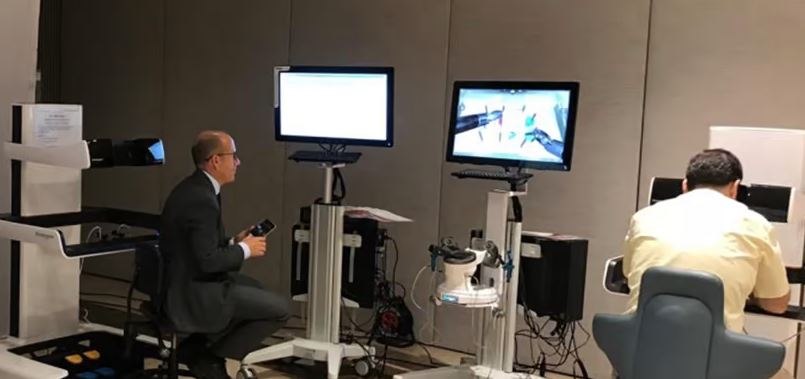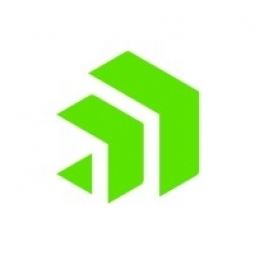Customer Company Size
Large Corporate
Country
- United Kingdom
Product
- MarkLogic
- Oracle
Tech Stack
- Java
- XQuery
Implementation Scale
- Enterprise-wide Deployment
Impact Metrics
- Cost Savings
- Productivity Improvements
Technology Category
- Application Infrastructure & Middleware - Database Management & Storage
Applicable Industries
- Education
Applicable Functions
- Product Research & Development
Use Cases
- Digital Twin
Services
- Software Design & Engineering Services
About The Customer
The Institute of Physics (IOP) is a scientific society of over 40,000 physicists and physics enthusiasts. IOP advances physics research, applications, and education. As advocates for science, IOP educates policy makers and the public about the importance of physics. The institute’s nonprofit publishing arm, IOP Publishing, produces its own scientific journals. Through its website, IOP Publishing also distributes a vast and evolving portfolio of content including journals, magazines, community websites, and conference proceedings. Always striving to increase accessibility to vital scientific content, IOP Publishing is a partner to the science community. IOP Publishing is a global distributor of scientific content with more than 50,000 users across the world submitting one million page requests each day.
The Challenge
IOP Publishing, a global publisher and distributor of scientific publications, was facing challenges with its legacy solution built on Oracle and Hibernate. The eight-layer stack required a multi-step process to take unstructured content, like journal articles, from ingest to delivery. This often resulted in multiple versions of content in different locations that created a mismatch between versions. Valuable time was lost tracing back to the source; this directly affected the scientists and other users who rely on the IOP platform as a vital research tool. To provide the best service to its user community, IOP Publishing wanted to overhaul its biggest platform, IOPscience. With a limited budget and a mandate to switch systems with no downtime, the IOP Publishing team knew it couldn't rebuild the system from the ground up with traditional technology.
The Solution
The IOP development team set about on its own to migrate from Oracle to MarkLogic section by section. Team members began by looking through the documentation, and experimented with small proof of concepts to boost their confidence. Then, by attending the MarkLogic User Conference, they learned how easy it would be to change schemas and add flexibility to their system. The team continued its education on the MarkLogic Community. a site for developers, students, and enthusiasts which includes free software, tutorials, screencasts, videos, demos, discussions, and contests. The team found the MarkLogic Community blog especially helpful with specific examples from seasoned developers. For example, a single blog post led the team to best practices for coding that drastically sped up IOP queries. As the developers learned the system, they began migrating content from Oracle to MarkLogic. They started with the landing pages for articles, working on just the bibliographic information. From there, they took on the task of representing entire articles. Now, the team is moving entire journals over one by one.
Operational Impact
Quantitative Benefit

Case Study missing?
Start adding your own!
Register with your work email and create a new case study profile for your business.
Related Case Studies.

Case Study
Revolutionizing Medical Training in India: GSL Smart Lab and the LAP Mentor
The GSL SMART Lab, a collective effort of the GSL College of Medicine and the GSL College of Nursing and Health Science, was facing a challenge in providing superior training to healthcare professionals. As clinical medicine was becoming more focused on patient safety and quality of care, the need for medical simulation to bridge the educational gap between the classroom and the clinical environment was becoming increasingly apparent. Dr. Sandeep Ganni, the director of the GSL SMART Lab, envisioned a world-class surgical and medical training center where physicians and healthcare professionals could learn skills through simulation training. He was looking for different simulators for different specialties to provide both basic and advanced simulation training. For laparoscopic surgery, he was interested in a high fidelity simulator that could provide basic surgical and suturing skills training for international accreditation as well as specific hands-on training in complex laparoscopic procedures for practicing physicians in India.

Case Study
IoT platform Enables Safety Solutions for U.S. School Districts
Designed to alert drivers when schoolchildren are present, especially in low-visibility conditions, school-zone flasher signals are typically updated manually at each school. The switching is based on the school calendar and manually changed when an unexpected early dismissal occurs, as in the case of a weather-event altering the normal schedule. The process to reprogram the flashers requires a significant effort by school district personnel to implement due to the large number of warning flashers installed across an entire school district.

Case Study
Implementing Robotic Surgery Training Simulator for Enhanced Surgical Proficiency
Fundacio Puigvert, a leading European medical center specializing in Urology, Nephrology, and Andrology, faced a significant challenge in training its surgical residents. The institution recognized the need for a more standardized and comprehensive training curriculum, particularly in the area of robotic surgery. The challenge was underscored by two independent studies showing that less than 5% of residents in Italian and German residency programs could perform major or complex procedures by the end of their residency. The institution sought to establish a virtual reality simulation lab that would include endourological, laparoscopic, and robotic platforms. However, they needed a simulator that could replicate both the hardware and software of the robotic Da Vinci console used in the operating room, without being connected to the actual physical console. They also required a system that could provide both basic and advanced simulation training, and a metrics system to assess the proficiency of the trainees before they performed surgical procedures in the operating theater.

Case Study
Edinburgh Napier University streamlines long-distance learning with Cisco WebEX
• Geographically dispersed campus made in-person meetings costly and inconvenient.• Distance-learning programs in Malaysia, India, and China required dependable, user-friendly online tools to maximize interaction in collaborative workspaces.• Virtual learning environment required a separate sign-in process, resulting in a significant administrative burden for IT staff and limited adoption of collaboration technology.

Case Study
8x increased productivity with VKS
Before VKS, a teacher would spend a lot of time showing a group of 22 students how to build a set of stairs within a semester of 120 hours. Along with not leaving the teacher much time to provide one-on-one support for each student to properly learn carpentry, it also left a considerable amount of room for error. Key information would be misinterpreted or lost as the class was taught in the typical show-and-tell way.

Case Study
Scalable IoT Empowering GreenFlex's Sustainable Growth
GreenFlex, a company that supports sustainable development, decarbonization, and energy efficiency, faced several challenges in its quest to expand its business. The company needed to deploy a robust and sustainable IoT technology to support its growth. It was crucial for them to monitor and control devices at customer sites in a safe and reliable manner. They also needed to integrate devices across a range of communication protocols and gather and act on data to meet efficiency targets. GreenFlex had previously built IoT capabilities into its digital platform, GreenFlexIQ, to monitor and manage customer sites remotely. However, they soon realized that they needed a new platform to support their ambitions. They needed a platform that could scale to connect more devices for production management and make it easier for the operations team to manage devices in the field.







